SHEEP Central editor Terry Sim is currently overseas as part of a Victorian saleyard managers’ tour of the UK and the Netherlands, looking at Europe’s approach to sheep electronic identification. This is the first of his brief ‘snapshot’ reports while on tour. Further reports will appear next week.
FIRST day on a week-long tour of English livestock markets and some questions are being answered for Victorian saleyard managers investigating how sheep electronic identification will fit into their operations.
At the Sedgemoor Livestock Market in south-west England yesterday Victorian saleyard managers saw the processing, tag scanning and selling of about 700 sheep penned for sale under a roof on concrete. The saleyard managers are being hosted on the tour by UK livestock tag and data equipment manufacturer Shearwell Data.
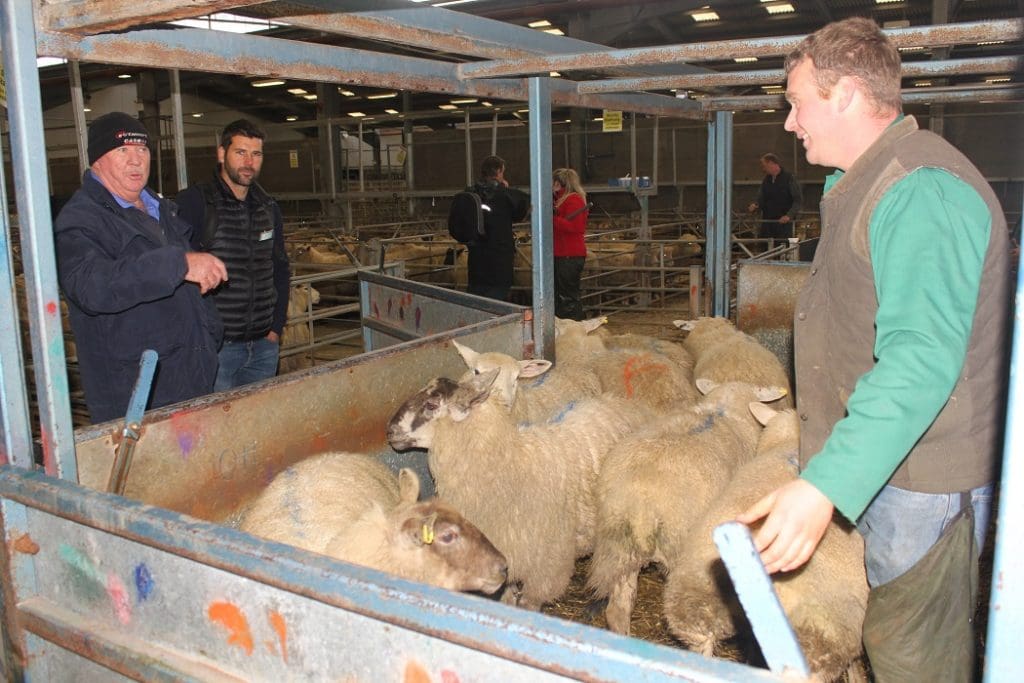
Sedgemoor Market fieldsman Adam Hayes, right, explains the liveweight selling to tour participants Ian McDermott, Shepparton, and Chris Lynch, Ouyen.
Market manager, Gleenslade Taylor Hunt director Robert Venner, admitted it was a quiet day with the centre often selling up to 4000-6000 sheep and lambs on a busy “busting” Saturday sale. With sheep sales during the week, the annual throughput of the centre could reach around 250,000 sheep and lambs. The centre also sells cattle and pigs, with the sales running simultaneously from 10am.
Single ownership markets, fewer agents
Most UK markets are owned and operated by the one company that also sells the livestock and provides fieldsmen serving a similar function to Australian stock agents, to visit farmers and help determine which stock are ready to sell.
The scale of many UK sheep operations intrinsically adds time to the selling operation, with each lamb mouthed, graded, raddled and weighed on sale day. Often the markets sell many single sheep, lamb or cattle lots in separate pens because that is what many vendors offer. The market had 42 loading bays.
“The difference over here in (livestock) marketing is that we’ll sell one at a time and you will sell 100 at a time, because yours are a lot more uniform and even in terms of breeds,” Mr Venner said.
The sheep selling system involves a similar level of pre-sale drafting or shedding of sheep, with an accredited grader raddling lambs according to the EU standard or grid on condition score – black, blue, yellow or red – for buyers. The lambs are then picked or shedded (drafted) into even lots, sometimes to breed, but within the colour scores, in a laneway by two men with no race or drafting gate. The vendor sale lots are then weighed and penned for scanning.
Sheep tag reading to office in “real time”
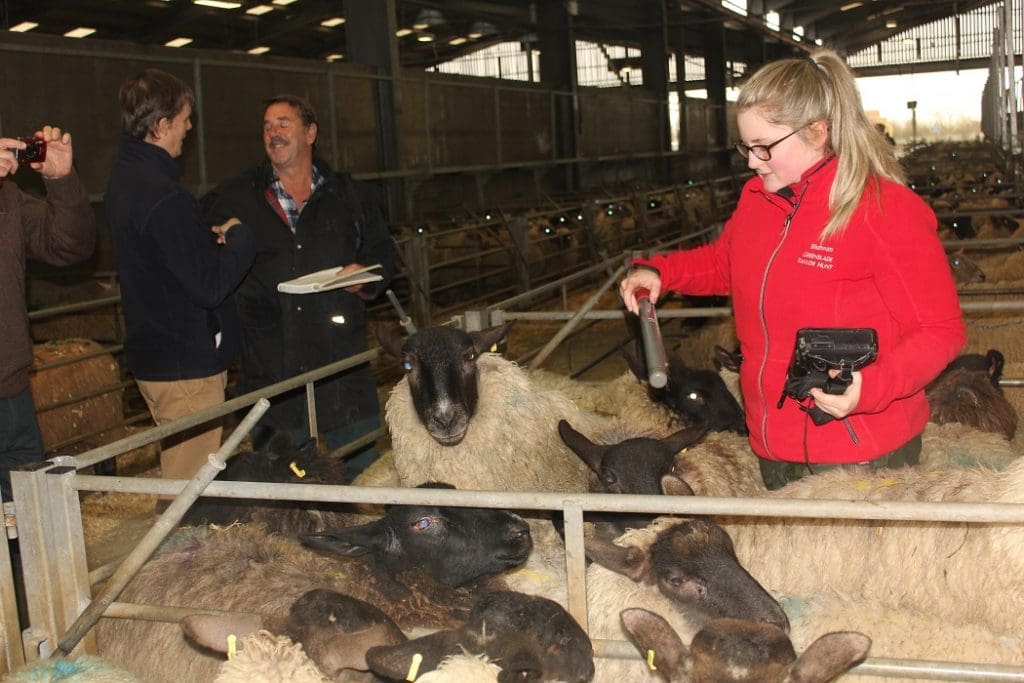
Sedgemoor Market’s Shannan Betty scanning sheep.
Market worker Shannan Betty, with a scanning wand and hand-held terminal or tablet, showed how she could scan 2-3 rows of electronically-tagged sheep or lambs in an hour – with about 15-20 pens in a row and 5-20 sheep in a pen — equating to potentially 1200 lambs an hour.
“They would have to be fairly well packed in and they would have to get on with it.
On a big Saturday sheep market, the centre employs an extra 2-3 people to scan tags.
The market centre is using Newline ASP software which enables sheep EID tags scanned in pen-allocated sale lots to be processed in real time from a hand-held pad which is connected via Bluetooth to the wand and via WiFi to the market’s office. Sheep and lambs, and cattle, are scanned just once in their sale lots before selling.
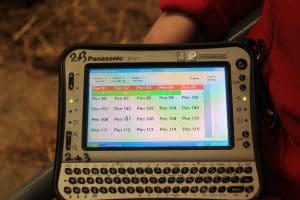
A hand-held tablet used at the Sedgemoor Market
Newline director PC Jones said with the hardware linked wirelessly to back-office software scanning operators can delete or make changes and re-start scanning and sub-lots can also be quickly made within sale pens after the initial scanning with a ‘splitter’ attached to the scanner. The tablets can hold the full version of the sale software.
“Anything you can see in the office they can see here.”
Mr Jones said the level of cost which EID added to selling costs varies from market to market, but the centres doing pen-scanning have had to take extra people on to do the scanning.
“Some markets literally just brought a hand-held reader with a number pad on it and did it all from there and that might be only 1000 pounds.
“These guys with a wand, a tablet and Wifi it might be 5000 pounds and race readers when they first came over would have been 25,000 pounds, but they have come down in price.”
Mr Jones said when sheep are sold through a sale ring they are scanned through a race reader.
“Once we get north of Manchester it is all ring-selling, everywhere south it is all pen-selling.
“In Northern Ireland, as well as scanning them, they (EID tag numbers) have to be sent to the government data base pre-sale, they to get 100pc (read??) and it has to be verified by the government before they can actually sell them.
“They are encouraged down here to get 100pc, but in the north they just run them through a race and that’s it – it’s around 95pc normally.”
Race scanning more efficient
Mr Jones said UK market centres could handle bigger sheep and lamb numbers more efficiently with race scanning. At Sedgemoor market, the main administration office is connected via fibre optic cable to the saleyard huts where stock is booked in and liveweights are recorded. Scanner touch pads are connected wirelessly to the hut terminals and to the main office.
“So as soon as the scanner gets to the pen she already knows what she is expecting to read because he has entered it in the office – so it’s all real time.
“As she is scanning the tag, the wand sends the tag number via Bluetooth to the tablet and the tablet then sends it via WiFi sends it back to the hut.”
Mr Jones believed race reading would be a more efficient way of scaling systems up to handle the numbers of sheep sold through Australian saleyards.
“But it comes down to the logistics of where are you going to put the races, and if you are reading in and reading out…”
Mr Jones said farmers can use HDX or FDX tags and some read better than others.
Markets absorbing extra EID and EU costs
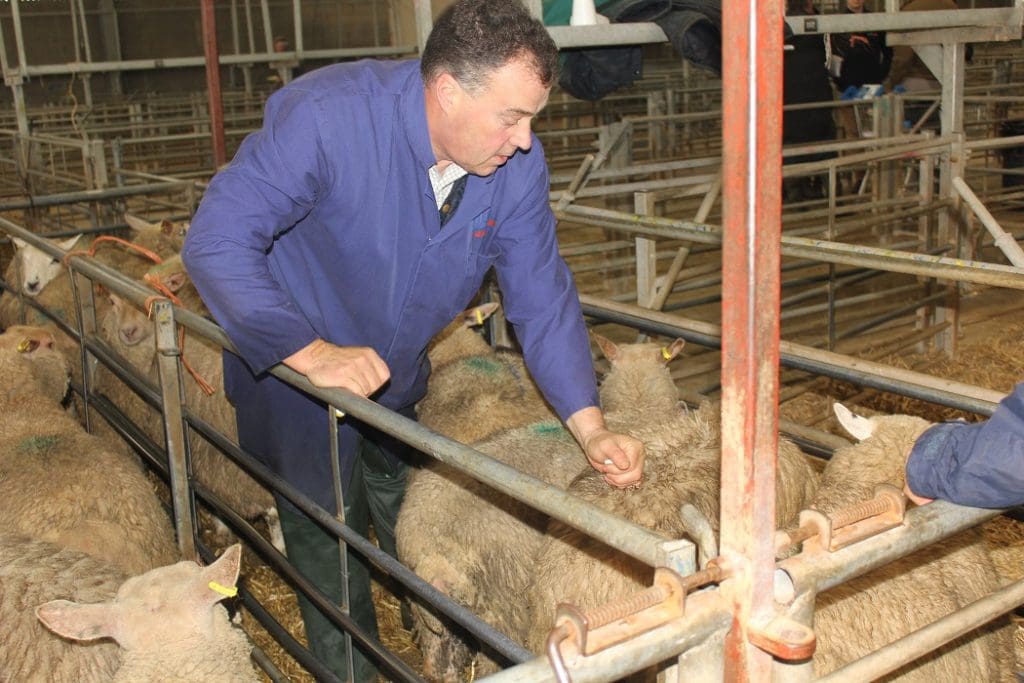
Grader Richard Blake raddling lambs at Sedgemoor Market.
Mr Venner said the market employed about 60 people, but EID requirements and EU regulations had added staff cost, administration and cost to the operation, but commission rates ( currently 2.5 percent of gross for slaughter lambs and 3pc for all other sheep) had not been lifted to reflect this to stay competitive with other centres. A 55 pence toll is also levied for each sheep or lamb.
“On a Saturday with three extra girls running around doing the sheep ear tag reading, that’s another 15,000-plus pounds a year and we’ve had to invest in the WiFi connections, software upgrades, pads and wands – so that’s all it has done, added cost.
“Then you’ve got the administration afterwards, sorting out the problems and we’ve still got the paper licences on top to deal with.”
EU regulations post-Foot and Mouth Disease has also added cost and to the market’s operation, with the market’s required to have a 100 percent read rate for sheep tags. Sheep without tags have to be tagged before they can be sold.
There is no soft flooring in the sheep or cattle pens.
“We can’t hold a market on soft flooring — if we had a market on soft flooring we couldn’t hold another one for 28 days,” Mr Venner said.
After each sale, the selling area has to be washed down and disinfected.
“We live with it.”
Sedgemoor Market fieldsman said Adam Hayes said he could weigh 500-600 lambs an hour “if they keep coming”, but this slowed with multiple small lots.
Mr Hayes said the need to scan and record electronic tags on sheep has added time and cost to the sale operation, but the market does not charge for the scanning due for fear of farmers taking stock to other centres.
“We could have 2000 sheep on a Monday which would mean we would need maybe one or two extra people (for scanning).”
Lamb prices lifting
Mr Venner said prices for heavy 50kg lwt lambs lifted from 75-78 quid last week to 80-83 quid on Monday. He said at the end of February dairy farmers usually want sheep farmers agisting sheep on their land to move them off to let pasture recover for spring cow turn-out and silaging.
“So you get quite a lot of hoggs (hoggets or old lambs) coming to the market at the end of February because people who have had them out on dairy farms on winter keep haven’t got anywhere else to put them so they’ve got to sell them.
“So once you’ve got through that little flush of hoggs the market then comes back more into balance and if anything this year, because we had a very good time for selling in autumn, when traditionally it can really plummet,” he said.
“And we had a good growing season and people kept selling their lambs through the second half of the year because the trade and the grass growth was there, that means that I don’t think we’ve got a huge carry-over of hoggs into the second year.
“I think hogg numbers are going to be fairly tight – we had quite a small entry (offering) yesterday to what we should be having this time of the year – numbers just aren’t out there at the moment.”
Mr Venner said the UK supermarkets used the imported New Zealand lamb trade to keep domestic lamb prices down.
“There are not quite as much New Zealand lamb coming over as there has been in previous years.
“I think it is about 6pc down because New Zealand are looking at China and other place and that possibly help us as well as we go forward.”
In his 2016 annual report, Mr Venner said the Brexit decision and a weak pound had helped lamb prices, and the 2016 sheep and cattle throughput had increased 7.2pc. Store lamb numbers lifted 12pc in 2016, couples (ewes and lambs) were up 35pc and grazing ewes up 17pc. Competition and demand has driven those increases, he said.
“As an exporting industry, Brexit and its immediate effect on the value of the pound was always going to have a significant impact.
“As our lamb trade is built on exports, Brexit brought an instant fillip to trade,” he said.
“The second half of the year saw a much-improved trade when the annual “Derby Day” collapse did not materialise.”
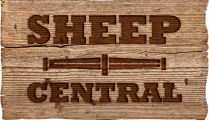
HAVE YOUR SAY